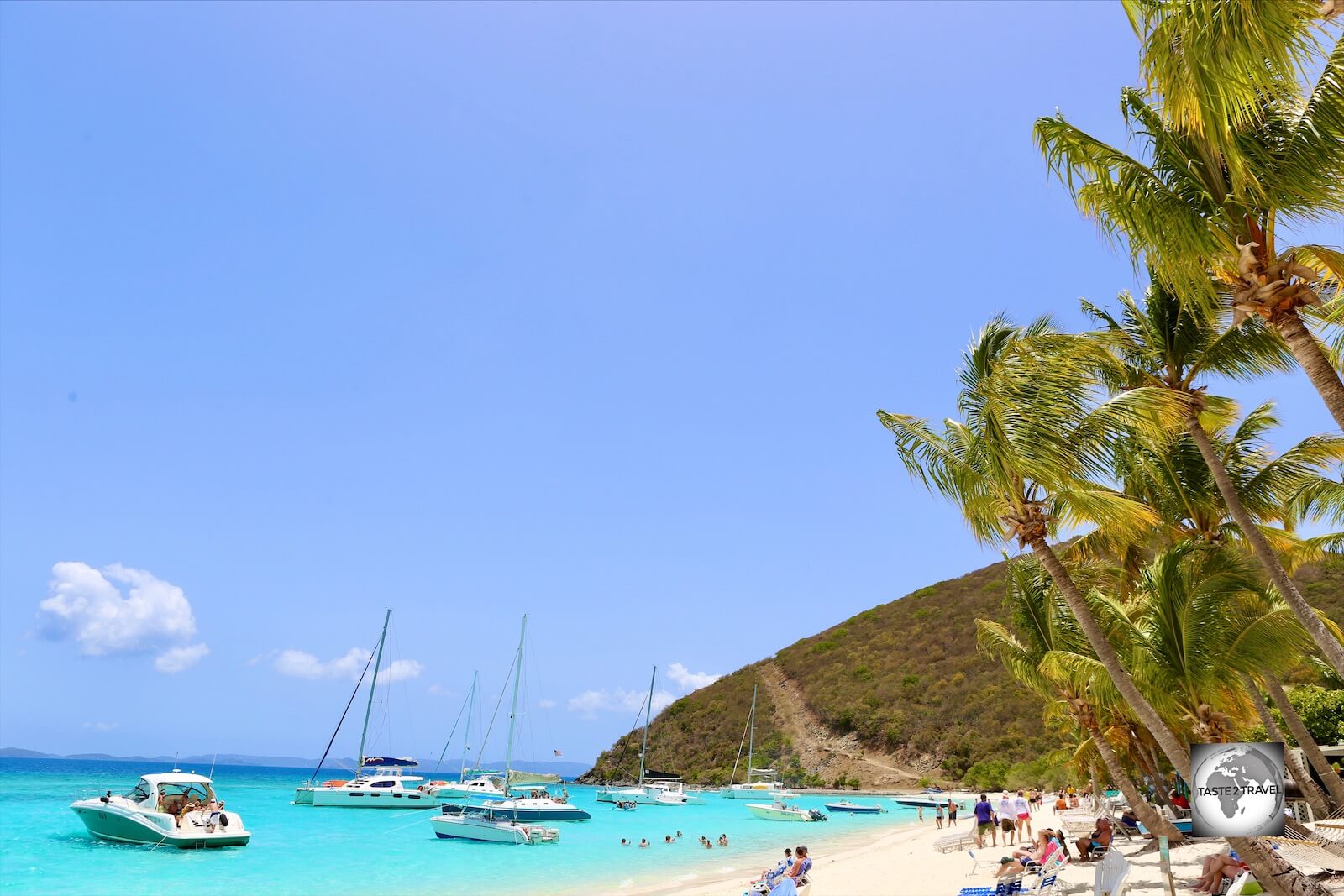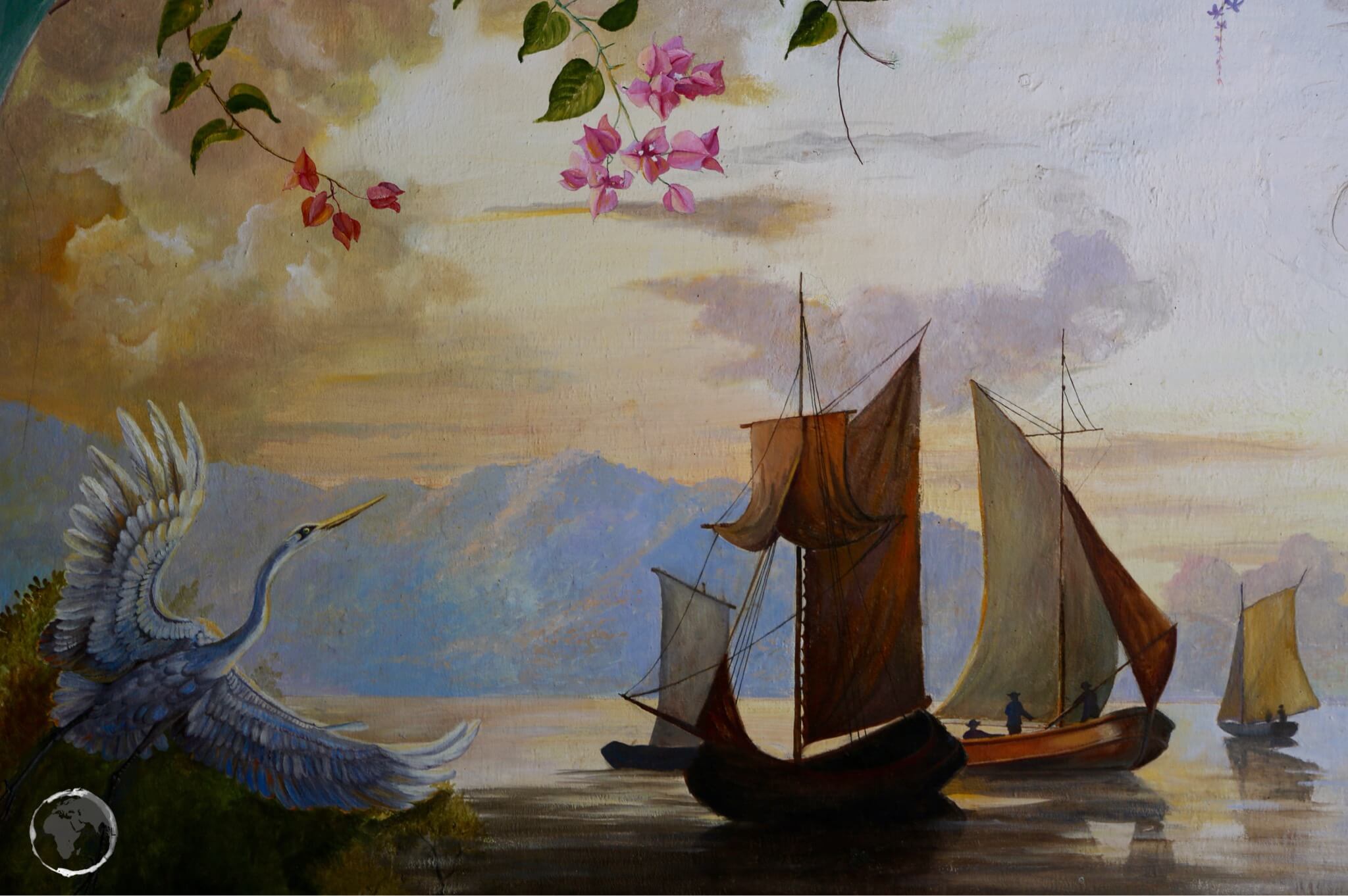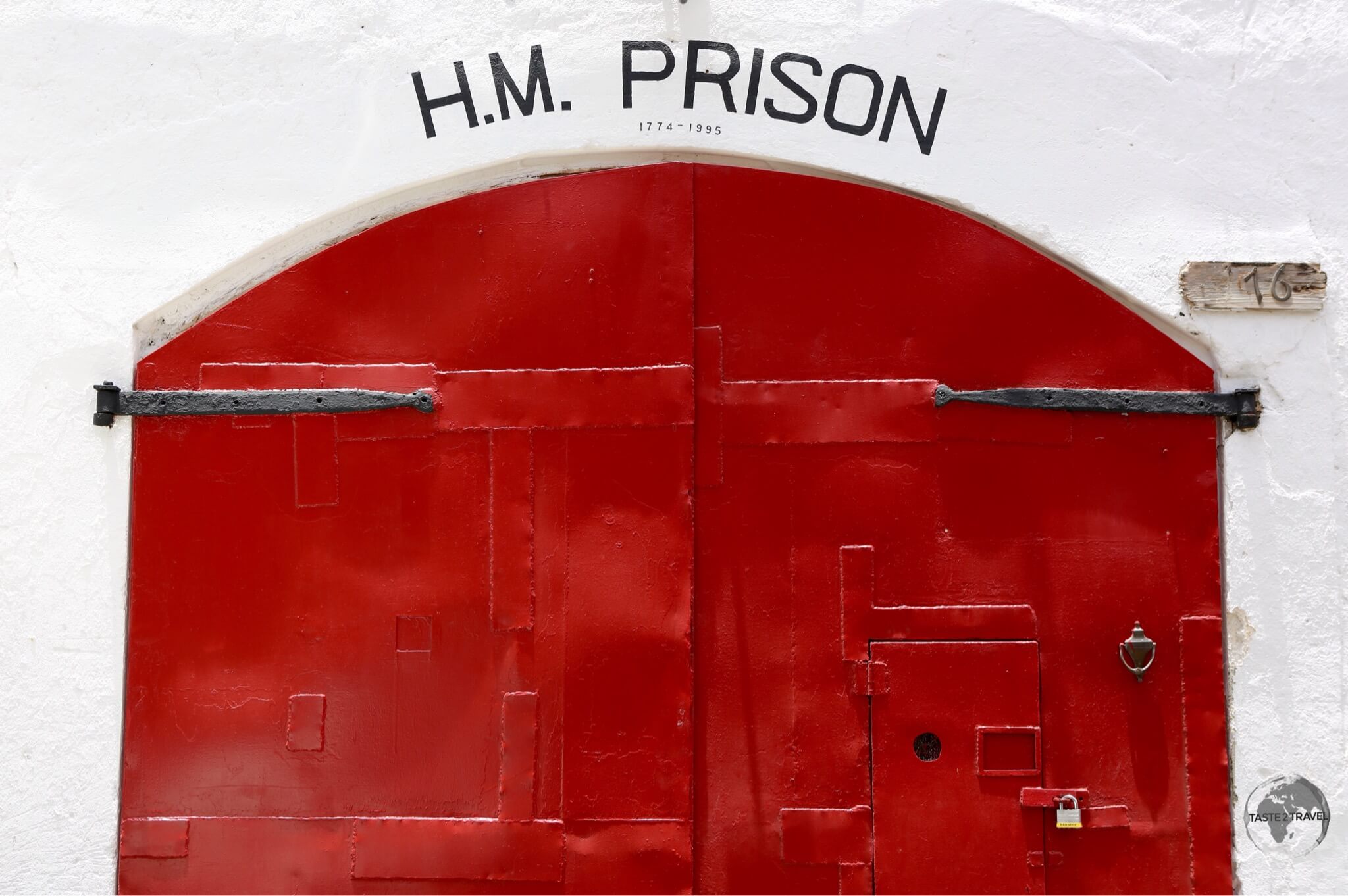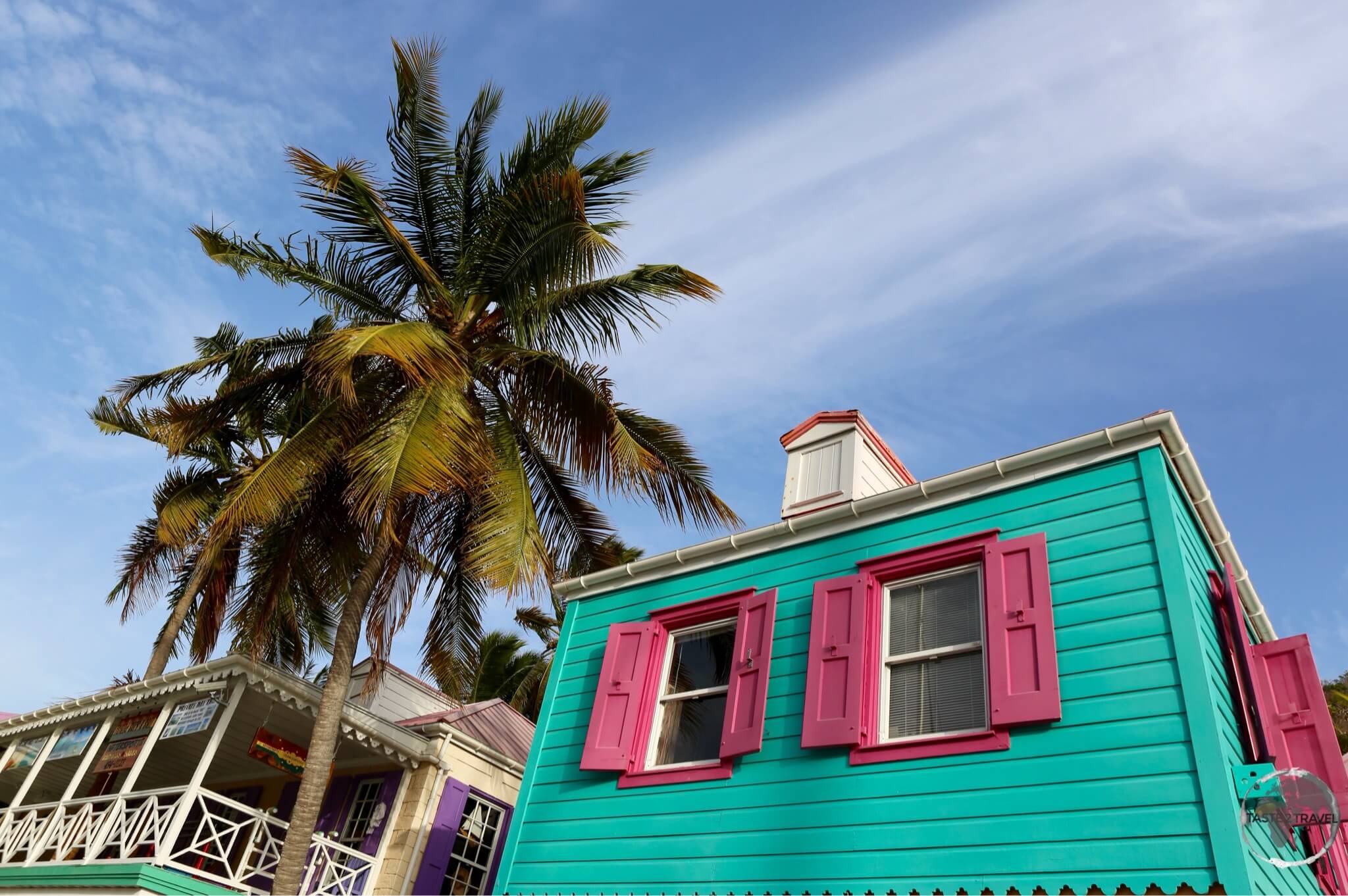BVI Travel Guide
Welcome to the taste2travel BVI Travel Guide!
Date Visited: May 2015
Introduction
With more than 60 islands and cays, the British Virgin Islands (BVI) offers something for everyone. Once a haven for pirates, today this stunningly beautiful archipelago is not only a welcoming place for visitors, but one of the world’s premier sailing destinations. This British Overseas Territory offers a truly unique travel experience for those fortunate enough to find their way to it’s shores.

A view of Savannah Bay, Virgin Gorda Island, British Virgin Islands.
The islands make up part of the Virgin Islands archipelago, with the remaining islands constituting the U.S. Virgin Islands (USVI). Almost all the islands are volcanic in origin with only four of them being of any significant size – the main islands of Tortola, Virgin Gorda, Jost van Dyke and Anegada.

A view of Road Town, the capital of BVI.
Distances between the islands are short, each of them separated by the calm, azure-blue waters of the Caribbean sea, making BVI a sailor’s paradise.
For those without their own yacht, there is plenty to do on land from hiking lush, green volcanic peaks to exploring secluded coves and bays.

The pristine waters of ‘The Baths’ on Virgin Gorda island offer some of the best snorkelling in the BVI.
Location
BVI is located immediately to the east of the USVI islands of St. John and St. Thomas and 96-km to the east of Puerto Rico. Frequent boats connect BVI to USVI with many tourists preferring to fly into the much larger airport on St. Thomas.
History
Like almost all other islands in the Caribbean, the original settlers on BVI were the native Arawak Indians who arrived around 100-BC from present day Venezuela. They were eventually replaced during the 15th century by the more aggressive Carib Indians.

The flag of the British Virgin Islands which features Saint Ursula.
Did you know?
The flag of BVI features the Union Jack and the coat of arms of BVI, which feature Saint Ursula holding a flaming gold oil lamp which is surrounded by a further eleven lamps, which represent her 11,000 virgin followers. The islands were named after these virgin followers by Christopher Columbus when he discovered the islands in 1493.
As with almost every other piece of real-estate in the Caribbean, the first European to sight the islands was – yes – Christopher Columbus, during his 2nd voyage to the Americas in 1493. While he never landed on the islands, he gave them the fanciful name Santa Ursula y las Once Mil Vírgenes (Saint Ursula and her 11,000 Virgins), shortened to Las Vírgenes (English: The Virgins), in honour of the feast day of Saint Ursula and the 11,000 virgins who were martyred with her.
The Spanish empire initially claimed the islands but never attempted to settled them. However, in subsequent years the islands proved to be very popular with the English, Dutch, French, Spanish, and Danish all jostling for control.
The many hidden bays and coves in the BVI archipelago have always attracted pirates and privateers seeking refuge and shelter. Sir Francis Drake visited the area on four separate occasions. Today the main channel through the archipelago is called the Sir Francis Drake Channel.

White Bay Beach, Jost Van Dyke Island, BVI.
Another privateer who played a key role in the history of the islands was the Dutchman Joost van Dyk, who organised the first permanent settlement in the territory in Soper’s Hole, on the west end of Tortola. After he provided some (non-military) support to a Dutch admiral who later sacked San Juan (Puerto Rico), the Spanish retaliated by laying waste to everything on Tortola. Joost van Dyk managed to escape to a nearby island, which now bears his name.

A view of White Bay Beach, Jost Van Dyke Island, BVI.
The Dutch West India Company considered the BVI to be of important strategic value, due to their central geographical location. They built large stone warehouses east of Road Town to facilitate exchanges of cargo between North and South America.
England seized control of the BVI in 1672 and have retained influence since.

Beach on Virgin Gorda Island.
The British established sugar plantations on the islands, with slaves being imported from Africa as a source of labour. Once slavery was abolished (1834), the plantations went into decline. Today the population of BVI is 28,000, with 83% being Afro-Caribbean, descended from slaves brought to the islands by the British.
The mainstays of the economy today are tourism and offshore banking.
Financial Services

Photo source: International Man
A report in 2000 by KPMG concluded that nearly 41% of all offshore companies in the world were incorporated in the British Virgin Islands, making the BVI one of the world’s leading offshore financial centres.
The biggest selling point of a BVI company is corporate secrecy. Over the years there have been numerous scandals but the UK government has been reluctant to introduce any sort of meaningful reform to the industry.
The Territory, presided over by a British governor and ultimately the Queen, collected $180-m from registration fees in 2012. This represented more than 60% of total revenue for BVI.
Due to the success of the financial services sector, the BVI boasts one of the highest incomes per capita in the Caribbean.
Sightseeing
Tortola Island
Tortola is the main island of the BVI, and home to 87% of it’s population. This lush, mountainous, volcanic island is 19-km long and 5-km wide. It’s main town, and the capital of the BVI, is Road Town.
Legend says Christopher Columbus named the island ‘Tortuga‘ (Spanish for ‘turtle’), due to the presence of Turtle Doves on the island. However it was the Dutch who named the island ‘Ter Tholen‘ after a coastal island in the Netherlands. The British later renamed the island ‘Tortola‘.
The Northern coast has the best beaches on the island, including Smuggler’s Cove, Long Bay, Cane Garden Bay, Brewer’s Bay, Josiah’s Bay, and Lambert beach. There are mountains running along the spine of the island which are ideal for hiking and provide great vantage points. The highest peak is Mount Sage at 530-m.
Road Town

A colourful shopfront in Road Town, the capital of BVI.
The capital and largest city (population: 9,400) of the BVI, Road Town is built around the horseshoe-shaped Road Harbour.
The city centre is small and compact and most sites can be visited in half a day.
They include:
- J.R. O’Neal Botanic Gardens – A small botanic garden, located a short stroll from downtown.
- Old Government House Museum – Located at the end of Main street, this whitewashed manor is a classic example of British colonial architecture. It served as the former residence to past British Governors and was where visiting royalty would stay. The old Government house has now been renovated and converted into a museum (the new Government house is located next door). One of the highlights are the beautiful murals painted on the walls of the dining room by local artists, which depict life around Road Town at the turn of the 19th century.
- BVI Folk Museum – A small museum located on Main street which provides an overview of the history of the island, including slavery.
- HM Prison – Located on Main street but now closed, this is the oldest structure in Road Town.
- Main Street – The ‘main’ street is worth a stroll. Here you will find most sights and the best cafe in town.

Artwork inside Government House, Road Town, BVI.
For the best coffee in town, this caffeine freak recommends you head straight to Island Roots Cafe on Main. Apart from great coffee, lunch here is very good and there is a small shop selling artworks from local artists.
Further along Main street, overlooking the harbour, you’ll find the large Pusser’s Road Town Pub. This place is famed for it’s Caribbean cuisine such as Jerk chicken and pork but they also offer more standard fare such as pizzas and hamburgers. There is also a large gift shop onsite.

Main entrance to the Road Town prison – complete with a polite door knocker.
Frenchman’s Cay
This is the jumping off point for those travelling to and from the USVI. Regular ferries depart from the West End ferry terminal for St. John and St. Thomas (see the ‘Getting There‘ section below for more details).

‘Pusser’s Landing’ at Frenchman’s Cay, BVI.
Smuggler’s Cove
At the island’s northwestern tip, Smuggler’s is a gorgeous cove with a bar, kiosk and good snorkeling off the beach. You will need your own transport to reach this remote beach.
Apple Bay
This beautiful bay on the north coast of Tortola is home to the Sugar Mill Hotel – a beautiful boutique hotel housed in the grounds of an old sugar mill. The Sugar Mill restaurant is one of the best on the island. If you have the opportunity to dine here you should do so. The bar is an ideal place to watch the sunset.
Windy Hill

Sunset drink at the Bananakeet bar which is located on Windy Hill.
Separating Apple Bay and Cane Garden Bay is Windy Hill, a steep hill which rises up directly out of the sea. Located on the roadside at an elevation of 120-m, the Bananakeet cafe is without a doubt the best place on Tortola to watch the sunset. From the terrace bar, you have a view along the north coast and across to other islands in the BVI and USVI archipelago.
Cane Garden Bay

Brown Booby at Cane Garden Bay, BVI.
Cane Garden Bay is picture-postcard perfect. The bay is one of the most popular beaches on the island and is overwhelmed when visiting cruise ship passengers are bussed in from Road Town. The protected bay is a popular anchorage for yachts, while the white sandy beach hosts plenty of beach-side bars and water-sports vendors.

A panoramic view of Cane Garden Bay, BVI.
Callwood Rum Distillery
Located just off the North Coast Rd at Cane Garden Bay, this family-run distillery is the oldest continuously operated distillery in the Eastern Caribbean. The Callwood family has been producing Arundel rum here for more than 300 years, using copper vats and wooden ageing casks.
Tours are available of the very rustic premises and a small store sells the local product and sample shots.
Brewers Bay

A sweeping view of Brewers Bay, BVI, where lush rain forest meets the sea.
Over a steep hill from Cane Garden Bay you will find the beautiful palm-fringed Brewers Bay. The journey here is spectacular including a brake-smoking drive down a very steep road full of sharp switchback turns.
Nicole’s beach bar rents chairs and sells snacks. Due to it’s isolated location and difficult access road, the beach is normally blissfully quiet.

Palm Trees at sunset, Brewers Bay, Tortola Island, BVI.
Josiah’s Bay
Located at the end of a long, quiet country lane is the best surf beach on Tortola. Josiah’s Bay is a beautiful sandy beach with good wave action when the swell is right. There are a couple of beach-side restaurants serving meals and drinks.
As with most places on the island you need your own transport to reach here.
Aragorn’s Studio
Meanwhile… on neighbouring Beef Island, a local metal sculptor – Aragorn Dick-Read – started a studio under the sea-grape trees fronting Trellis Bay, the broad beach just east of the airport. Soon he was joined by a community of local artists who have now setup a sprawling arts centre.
You can access Trellis Bay by taking the road that skirts around the runway behind the airport.
Jost Van Dyke Island

The stunning White Bay Beach on Jost Van Dyke Island, BVI.
Located 8-km northwest of Tortola and St. John (USVI) and weighing in at just 8-square kilometres, Jost Van Dyke (JVD) is the smallest of the four main islands of the BVI. The full time population of the island is just 298.
The island was once the refuge of the Dutch privateer, Joost van Dyk, who used the island to wait out a Spanish sacking of Tortola. Today the island is instead invaded by beach-loving tourists from both the BVI and USVI who come to bathe on it’s beautiful beaches.
Frequent ferries connect Tortola (West End Ferry Terminal) and St. John (Cruz Bay) with JVD (Grand Harbour). See the ‘Getting Around’ section below for more details.
From Grand Harbour a taxi will take you up over the steep hill to stunning White Bay.
White Bay

A slice of heaven – White Bay Beach on Jost Van Dyke island, BVI.
This stunningly beautiful white sand beach is lapped by the most incredibly clear, turquoise waters. The beach is hugely popular with sailing tour groups and with the hundreds of do-it-yourself charter boats floating around this part of the world.
The beach is lined with a number of bars, the most famous of which is the Soggy Dollar Bar, so named because most of the patrons anchor off the beach, swim to shore, and pay for their drinks with wet money.

One of the many beach-side bars on White Bay Beach, BVI.
Virgin Gorda Island

Savannah Bay Beach on Virgin Gorda island, BVI.
At 21-square kilometres, Virgin Gorda is the third largest of the BVI islands, and the 2nd most populous. Christopher Columbus is said to have named the island “The Fat Virgin”, because the island’s profile on the horizon looks like a fat woman lying on her side. The island is a laid back place where you could easily spend a day or more exploring beautiful natural attractions – including the BVI’s number one tourist attraction – The Bath’s.
Frequent ferries connect Tortola (Road Town) and Beef Island (Trellis Bay) with Virgin Gorda (Spanish Town). See the ‘Getting Around’ section below for more details.
Public transport on the island is very limited. The best way to get around is to hire a car from one of the agents in Spanish Town.
Spanish Town
The main town on the island and the 2nd largest town in the BVI, Spanish Town was originally settled by Cornish miners who worked in the local copper mine. The town is small with little to offer the visitor. All ferries from Tortola arrive at the dock in Spanish Town, while a small airport (for private charters) is located just outside of town.

Virgin Gorda Island is surrounded by the turquoise waters of the Caribbean sea.
The Baths

Fantastic snorkeling awaits at The Baths, the most popular tourist destination on Virgin Gorda island.
Located 2-km south of Spanish Town at the southern tip of the island, this collection of over-sized granite boulders is the number one tourist attraction in the BVI’s. These old volcanic rocks form a series of grottoes that flood with sea water. The snorkeling in Devil’s Bay is superb due to the fact that the seafloor is more rock and less sand so visibility is perfect.
When you wish to take a break from the snorkeling you can following a 20-minute trek, where you’ll get to clamber over boulders, wade through tidal pools and squeeze into impossibly narrow spaces before being spat out onto a white-sand beach.
This is a popular place and by 9-am each morning fleets of boats have moored off the coast, disgorging snorkelers and swimmers into the azure blue waters. If you come earlier or later in the day you will have more room to move.
Copper Mine National Park

Ruins from a former copper mine in the Copper Mine National Park, Virgin Gorda, BVI.
Located on a lonely bluff at the southwestern tip of the island is a set of ruins from an old Copper Mine. The mine was created by Cornish miners who worked the area between 1838 and 1867 and extracted as much as 10,000 tons of copper.
Accommodation
I stayed at the beautiful Sebastian’s on the Beach, which is located in Apple Bay on the north coast or Tortola. The hotel is located on a stretch of white sandy beach and is the perfect place to watch the sunset.
There are many other options for all budgets available on online sites such as booking.com
Eating Out
There is no shortage of good restaurants in the BVI. A dining highlight was dinner at the Sugar Mill Restaurant in Apple Bay (mentioned above).
For an amazing lunch on Virgin Gorda it’s hard to beat the BBQ at the wonderfully unpretentious and super friendly Hog Heaven. The views from the terrace overlooking Mosquito and Necker islands are breathtaking as is the flavour of the BBQ.
Visa Requirements
Some nationalities require visas for the British Virgin Islands – check your visa requirements prior to arrival.
Getting There
By Air
International flights arrive at the small Terrance B. Lettsome International Airport, which is located on Beef Island, which is connected to Tortola by the Queen Elizabeth II bridge.
Long distance direct flights are not available due to the short runway. The runway can currently handle small regional planes, the largest being the 64 passenger ATR-72 operated by LIAT.
The following airlines provide international connections to BVI:
- Air Sunshine – services to Anguilla, Dominica, Nevis, Puerto Rico, Saint Thomas, Sint Maarten
- BVI Airways – services to Dominica, Sint Maarten
- Cape Air – services to Puerto Rico
- LIAT – services to Antigua, Puerto Rico, Sint Maarten, Saint Kitts
- Seaborne Airlines – services to Puerto Rico
- Winair – services to Sint Maarten
By Sea
Ferries
There are regular international ferry connections operating between Tortola (Road Town and West End Ferry Terminal) and the US Virgin Islands of St. John (Cruz Bay) and St. Thomas (Red Hook Bay and Charlotte Amalie).
International services also operate between Great Harbour on Jost Van Dyke and St. John and St. Thomas.
Click to view current ferry schedules for BVI.
Cruise Ships
Visiting cruise ships dock at a large pier near the entrance to the inner harbour at Road Town – a short walk from downtown.
Getting Around
Public Transport
Public transport on the islands is non-existent.
Car
The best option for exploring Tortola and Virgin Gorda is to hire a car. You can collect a car upon arrival at Terrance B. Lettsome International Airport or in Road Town. On Virgin Gorda there are rental agents located a short walk from the dock in Spanish Town. No
Taxi
There are taxi operators available on both Tortola and Virgin Gorda. Fares are based on a fixed tariff – best to confirm the price prior to commencing your journey.
Ferries
Frequent, fast and reliable inter-island ferries connect Tortola, Jost van Dyke, Virgin Gorda and Anegada islands. All schedules are available on the following website.
Private Yacht
Road Town is home to The Moorings – one of the largest yacht charter businesses in the world. At their marina on the outskirts of Road Town is a fleet of more than a hundred yachts and catamarans available for hire.
You can either choose to hire a boat and sail it yourself – bareboat – or you can pay extra to have a crew manage the sailing for you.
That’s the end of my BVI Travel Guide.
Safe Travels!
Darren
Follow me on Instagram:
Further Reading
Other travel reports from the Caribbean region include:
- Anguilla
- Antigua & Barbuda
- Aruba
- Bahamas
- Barbados
- Bonaire
- Bermuda
- Cayman Islands
- Cuba
- Curaçao
- Dominica
- Dominican Republic
- Grenada
- Guadeloupe
- Haiti
- Jamaica
- Martinique
- Montserrat
- Puerto Rico
- Saba
- Saint Barthélemy (Saint Barts)
- Saint Eustatius (Statia)
- Saint Kitts & Nevis
- Saint Lucia
- Saint Martin/ Sint Maarten
- Saint Vincent & The Grenadines
- Trinidad & Tobago
- Turks & Caicos
- Virgin Islands (British)
- Virgin Islands (U.S.)
BVI Travel Guide BVI Travel Guide BVI Travel Guide BVI Travel Guide BVI Travel Guide BVI Travel Guide BVI Travel Guide BVI Travel Guide BVI Travel Guide BVI Travel Guide
Author: Darren McLean
Darren McLean is an Australian, full-time, digital nomad who has spent 37 years on a slow meander around the globe, visiting all seven continents, 189/ 193 UN countries and 240/ 251 UN+ countries and territories.
He founded taste2travel to pique one’s curiosity and inspire wanderlust.






